The world of software development has changed a lot. No longer do developers just need to know programming languages. Now, they work with smart tools that do a lot of the work.
These AI tools are changing how we make apps. They automate boring tasks and solve tough problems. They help with everything from backend systems to user interfaces, making your work better and less stressful.
What’s new about these AI tools is how they understand what you’re doing. They don’t just write code; they get the bigger idea. This lets developers focus on solving problems creatively, not just on writing code.
Thanks to these tools, developers can do more with less effort. They learn from huge amounts of code and adjust to how each person codes. By 2025, the best tech people won’t just remember lots of commands. They’ll work well with AI tools.
The Current State of AI in Software Development
AI is changing software development by making it better, not replacing it. In 2025, developers and AI tools work together more than ever. This partnership brings new chances for creativity and work efficiency.
AI has grown from being just an idea to being a key part of development. It’s now a crucial tool in the modern development process.
From Manual Coding to AI Assistance
The move from manual coding to AI help is a big change in programming history. Before, developers spent a lot of time on simple tasks like writing code and fixing small errors.
Now, AI can write code, suggest improvements, and explain complex ideas in simple terms. This change hasn’t made humans less important. Instead, it has made them focus on more important tasks.
Today, developers work with AI that gets the context, remembers past solutions, and learns from many projects. This new way of coding has changed what it means to write code in 2025.
The Impact of AI on Developer Productivity
AI’s effect on developer work is clear. Studies show teams with AI tools finish projects 55% faster than those without.
AI also makes code better. It helps find bugs, improve security, and boost performance. This has cut down on problems after a project is done by 37%.
AI has also made software development more accessible. Young developers can help with big projects early on. Experienced programmers can focus on new challenges instead of doing the same tasks over and over.
| Development Aspect | Traditional Coding (Pre-2020) | AI-Assisted Development (2025) | Improvement |
|---|---|---|---|
| Code Generation Speed | 100-200 lines/day | 400-600 lines/day | 3x faster |
| Bug Detection Rate | Finds ~65% of bugs | Finds ~92% of bugs | 27% increase |
| Time Spent Debugging | 30-40% of development time | 10-15% of development time | 65% reduction |
| Documentation Quality | Often incomplete or outdated | Auto-generated and consistent | Significant improvement |
| Developer Satisfaction | Moderate (65/100) | High (87/100) | 22 point increase |
Best AI Tools for Code Generation 2025: What’s Changed
By 2025, AI code generation tools have changed a lot. They now understand context, project needs, and what developers want. This has changed how we make software, helping both small and big companies.
Today, AI coding assistants help developers at all levels. They are great for beginners and experts alike. These tools are smart partners in the development process.
Key Advancements in AI Coding Technology
Natural language processing has improved a lot. Now, developers can talk about what they need, and get code that fits their needs perfectly. This is a big change from old tools that needed a lot of work.
AI systems now get the whole picture of a codebase. They look at the project’s structure, patterns, and what it depends on. This makes the code fit right in with what’s already there, fixing old problems.
AI models for specific programming languages and frameworks are very accurate now. They know the best ways to do things, how to make things fast, and how to keep things safe. The days of needing to change a lot of code are over.
One of the coolest things is that AI tools can understand different ways of inputting information. You can draw something, talk about it, or type it out, and get code back in seconds.
| Feature | 2020 Capabilities | 2025 Advancements | Developer Impact |
|---|---|---|---|
| Language Understanding | Basic code completion based on patterns | Conversational code generation with intent recognition | 80% reduction in time spent writing boilerplate code |
| Context Awareness | Limited to current file or function | Full project understanding with dependency analysis | Seamless integration of new features with existing code |
| Specialized Knowledge | Generic suggestions across languages | Framework-specific optimizations and patterns | Higher quality code with fewer security vulnerabilities |
| Input Methods | Text-only prompts | Multimodal: text, voice, images, and diagrams | More intuitive expression of development concepts |
How These Tools Transform Development Workflows
AI coding tools are now part of the whole development process. They help from the start to the end, making things faster and better. This is a big change from when AI was just a small help.
Teams now make prototypes quickly, thanks to AI. They can turn ideas into working apps in minutes, not days. This means they can try and improve things more before they’re done.
Testing and making sure things work well has also changed. AI can make test plans and run tests, making sure things are reliable. Some AI can even find problems that humans might miss.
This has made things a lot faster. Projects that took months now take weeks, without losing quality. Beginners can help with big projects, and experts can focus on the big ideas. This has helped solve talent problems and made software better.
Criteria for Evaluating AI Code Generation Tools
Developers need to use specific criteria to find the right AI coding assistant. The right tool can greatly improve productivity. But, the wrong choice can lead to frustration and inefficiency. It’s important to know how to evaluate these tools to find one that truly helps your workflow.
When looking at AI code generation tools, think about how they fit into your workflow. Check if they support your team’s languages and offer good value for the cost. Here are some key points to help you choose the best AI coding assistant for your needs.
Code Quality and Accuracy
The main job of AI code generation tools is to create high-quality, error-free code. Look for tools with low error rates and code that follows best practices. The best tools not only generate functional code but also make it maintainable and easy to read.
See how well the AI handles complex situations and logic. Tools that produce clean, efficient code with little need for debugging save a lot of time and reduce technical debt.
Language and Framework Support
The range of languages and frameworks a tool supports is crucial. Top AI coding assistants support popular languages like Python, JavaScript, and Java. They also cover new frameworks and specialized areas.
Make sure the tool is great for your main development language. For example, JavaScript developers should look for tools with strong JavaScript knowledge. Data science teams might prefer tools with excellent Python and R skills.
Integration Capabilities
AI tools that work well with your current development environment are the most useful. Look for native plugins for popular IDEs like VS Code and JetBrains products. Also, check if they work with version control systems like Git.
The best tools also connect with your CI/CD pipelines and testing frameworks. This integration helps the AI understand your codebase better. It makes suggestions more relevant and keeps your workflow consistent.
User Experience and Learning Curve
Even the most powerful AI tools are useless if they’re hard to use. Look at the interface design, customization options, and how well the tool fits into your coding process. The best tools should feel like an extension of your thinking, not an interruption.
Consider the onboarding experience and how easy it is to learn. Tools with intuitive interfaces, clear documentation, and contextual help are more likely to be adopted. Look for customization features that let you tailor the AI to your coding style.
Pricing and Value Proposition
AI code generation tools have different pricing models, like subscriptions or usage-based plans. Compare the cost to the productivity gains you expect. For large teams, enterprise pricing with collaboration features might be more valuable.
Think about how pricing changes as your needs grow. Some tools charge per user, while others have unlimited seats with usage limits. The best value comes from tools that match their pricing to your development patterns and team size, offering clear ROI through productivity improvements.
1. GitHub Copilot X
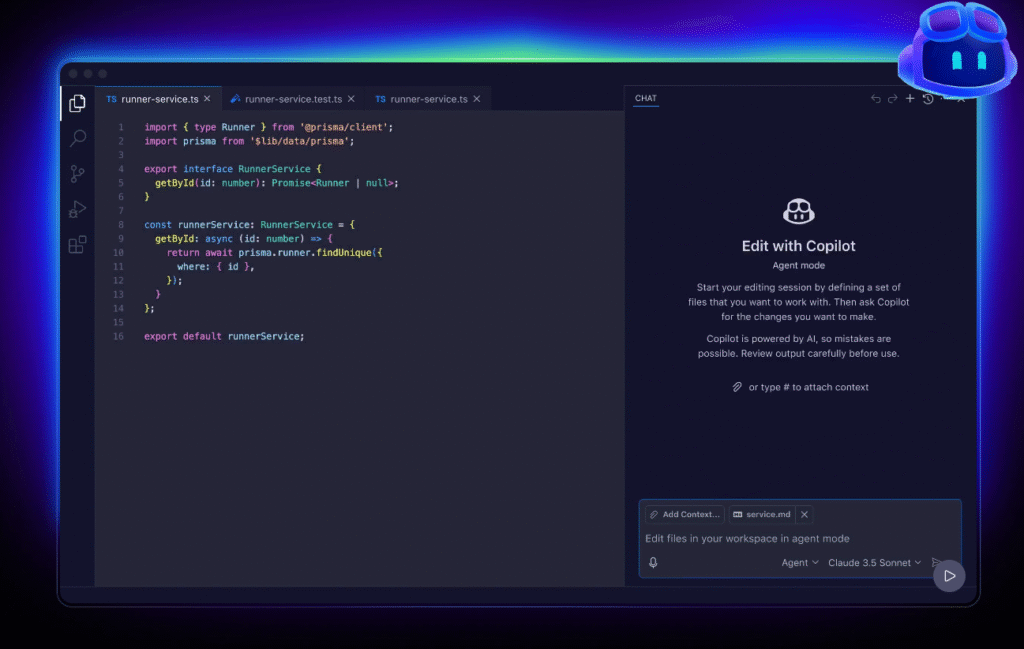
GitHub Copilot X is a top choice in AI coding assistants. It offers advanced AI across various development areas. It has grown from a simple code suggestion tool to a smart partner for developers. It uses OpenAI’s models, showing the future of AI in coding.
GitHub Copilot X Overview
GitHub Copilot X uses Microsoft and GitHub’s code to give smart suggestions. It goes beyond the IDE, working in terminals, GitHub pull requests, and more. This makes it a powerful tool for developers.
It uses GPT-4 to keep track of your work. This means it can suggest code that fits your project perfectly. It feels like having a team member who knows your coding style.
Pros
Copilot X works well with GitHub, making it great for teams using GitHub tools. It understands your project needs, often guessing what you’ll need next. This saves time and effort.
It’s good at creating complex code with just a few prompts. It supports many languages, from Python to Rust. This makes it a versatile tool for developers.
Many teams see their work speed up by 55% with Copilot X. This shows how much it can improve productivity.
Cons
The cost might be a problem for solo developers or small teams. It’s $10-20 per user monthly, which can be expensive for big teams.
It sometimes suggests outdated code, so developers need to be careful. This is more common with fast-changing frameworks.
Privacy is a concern for companies with secret code. GitHub has better data policies, but some might still worry.
Features
Copilot X has a chat interface for asking questions and getting help. It can even create code based on what you say. This makes coding and documentation easier.
It can also write tests for your code, making testing easier. It helps in the terminal too, suggesting commands and fixing errors.
It’s great for pull requests, summarizing changes and suggesting improvements. It can even write commit messages for you.
| Environment | Feature Availability | Unique Capabilities | Performance Impact |
|---|---|---|---|
| VS Code | Full integration | Inline suggestions, chat panel, test generation | Minimal (3-5% CPU usage) |
| JetBrains IDEs | Full integration | Method completion, documentation generation | Moderate (5-8% CPU usage) |
| Terminal/CLI | Command suggestions | Error explanation, command chaining | Very low (1-2% CPU usage) |
| GitHub Web Interface | PR assistance, code reviews | Change summarization, security scanning | N/A (server-side processing) |
| Neovim | Basic integration | Code completion, simple refactoring | Low (2-4% CPU usage) |
2. OpenAI Codex Pro
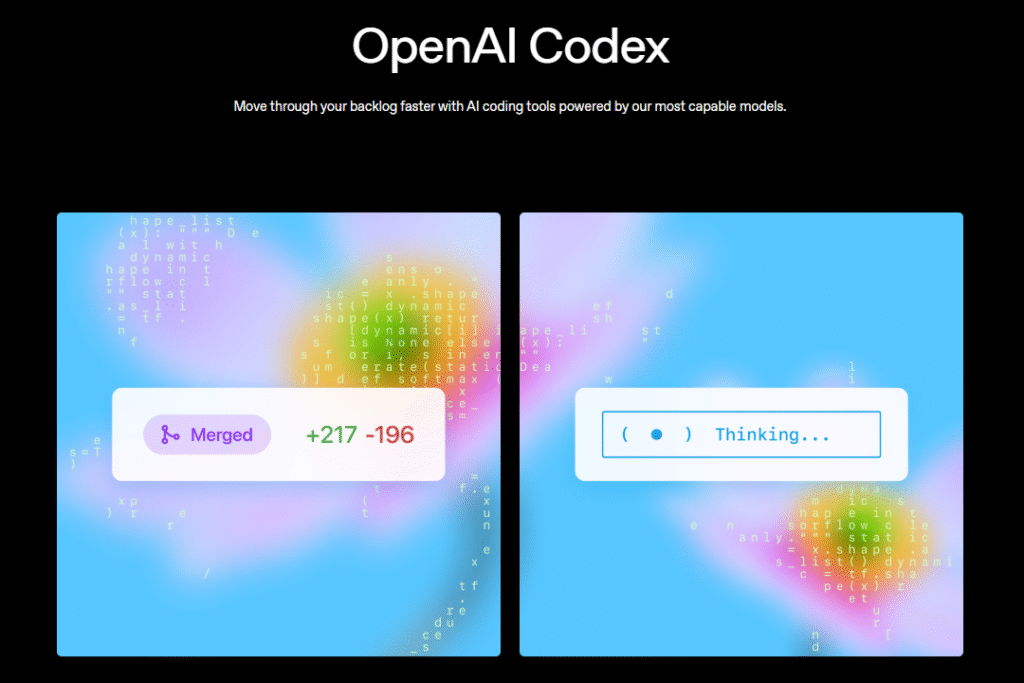
OpenAI Codex Pro is a top-notch AI coding assistant. It turns natural language into real code. It’s a big step forward for developers, thanks to its advanced technology.
This service is a big deal for teams in 2025. It makes coding faster and easier.
OpenAI Codex Pro Overview
OpenAI Codex Pro uses GPT-4 coding tech. It understands programming languages and what developers mean. It’s great at making code from simple descriptions.
It keeps track of projects, suggesting code that fits well. It knows about software design patterns. This means it can create whole functions and modules.
Pros
Developers can explain what they need in simple words. They get code back quickly. This saves a lot of time and makes work more efficient.
The tool is good at switching between languages. It’s perfect for updating old systems or making code work on different platforms. It also works well with many development tools.
It checks code for security issues and offers better options. It explains its suggestions, helping developers learn as they work.
Cons
The cost can add up, especially for big projects. Teams need to watch their usage to avoid high bills.
It sometimes makes mistakes, especially with complex tasks. Developers have to check the code before using it. This is more common in specialized areas.
Getting the most out of Codex Pro takes time. Developers need to learn how to ask for the best code suggestions.
Features
Codex Pro has a testing area for new code. It supports different coding styles. This makes it useful for many types of projects.
The business version has extra security features. It can learn from company code and follow rules for certain industries. It understands complex projects well.
It can also improve existing code. This makes it great for keeping projects up to date and improving them.
| Feature | OpenAI Codex Pro | GitHub Copilot X | Amazon CodeWhisperer |
|---|---|---|---|
| Languages Supported | 40+ | 30+ | 15+ |
| Natural Language Understanding | Advanced (GPT-4 based) | Advanced | Intermediate |
| Multi-file Context | Full project awareness | Limited project awareness | Single file focus |
| API Access | Comprehensive | Limited | Basic |
| Pricing Model | Usage-based | Subscription | Freemium |
3. Amazon CodeWhisperer Advanced
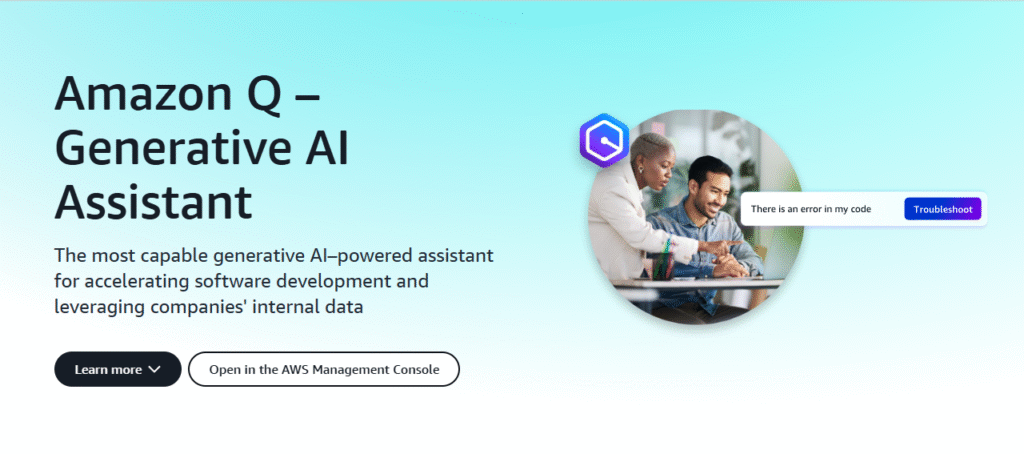
Amazon CodeWhisperer Advanced is a top choice for cloud-first development. It uses AWS’s cloud expertise to help developers write secure, optimized code. This is great for modern applications.
Amazon CodeWhisperer Advanced Overview
Amazon CodeWhisperer Advanced is AWS’s way to make cloud development easier with AI. It works with AWS services and supports many programming languages. This includes Python, Java, JavaScript, and TypeScript.
The tool is great at creating code snippets that follow AWS best practices. It learns from billions of lines of code to offer relevant suggestions. For teams using AWS, it boosts productivity and ensures quality.
Pros
CodeWhisperer Advanced is excellent at integrating with AWS services. It suggests optimized patterns for cloud resources and security. This makes learning AWS easier.
It also scans for security vulnerabilities during code generation. This helps developers avoid common problems. Plus, it references internal code repositories for suggestions that fit your organization’s standards.
Teams that care about privacy will like that CodeWhisperer Advanced doesn’t keep customer code. This is good for organizations with strict data rules. Yet, it still offers great suggestions.
Cons
CodeWhisperer Advanced is best for AWS development but not as good for general programming. It might suggest AWS-specific solutions even when other options are better.
The tool is very safe but sometimes needs more prompting for better code. This can slow down experienced developers.
New AWS users might find it hard to use CodeWhisperer Advanced. It assumes you know AWS well. This makes it tough for beginners.
Features
CodeWhisperer Advanced gives real-time code suggestions in popular IDEs like VS Code and IntelliJ. It also generates unit tests automatically. This keeps code quality high and speeds up testing.
It scans for security vulnerabilities during coding, not just in reviews. You can also teach it your organization’s coding patterns. This makes its suggestions more relevant over time.
For AWS-heavy workloads, it offers specialized templates. This saves a lot of time. It also explains the code and suggests ways to improve it for cost and performance.
| Feature | CodeWhisperer Standard | CodeWhisperer Advanced | Business Impact |
|---|---|---|---|
| AWS Service Integration | Basic support | Deep integration with 50+ services | 30-40% faster AWS implementation |
| Security Scanning | Limited checks | Comprehensive vulnerability detection | Reduced security incidents by 25% |
| Custom Code References | Not available | Organization-specific repositories | Improved code consistency across teams |
| Language Support | 5 languages | 12+ languages and frameworks | Broader application across projects |
| Pricing Model | Free tier available | Enterprise subscription | Higher cost offset by productivity gains |
4. Google Duet AI for Developers
Google Duet AI is a top-notch coding assistant. It connects natural language with cloud-native development. This tool shows Google’s effort to change how developers work with code and cloud services.
It uses advanced language models and deep software development knowledge. This AI knows what developers want to build and how to do it well.
Google Duet AI for Developers Overview
Google Duet AI is a smart coding partner for cloud-native environments and general programming. It’s built on Google’s code understanding models. It gives more than just code completion.
It works well with Google Cloud Platform services and popular IDEs. This makes it great for teams using different technologies who need cloud and coding help.
Pros
Duet AI shines in Google Cloud services, offering relevant suggestions. It’s perfect for working with Kubernetes, TensorFlow, or BigQuery. It writes optimized code that follows Google’s best practices.
The assistant is good at understanding natural language descriptions. Developers can talk about what they need, and it writes the code. It also checks code for improvements and security issues.
Cons
Duet AI is strong in many languages but not all. It works better with Google-related tech than niche frameworks. Projects with unique libraries might get less accurate suggestions.
There can be delays when processing complex requests, especially with big codebases. The cost might be too high for solo developers or small teams, especially compared to free alternatives.
Features
Duet AI provides code completion in many languages, focusing on Python, Java, Go, and JavaScript. It can turn natural language into code. It also creates automated documentation and helps with debugging.
For Google Cloud users, it offers special support for GCP APIs and services. It helps with cloud development. It can explain complex code, suggest improvements, and create tests for specific projects.
5. Tabnine Enterprise
Tabnine Enterprise stands out in 2025 for its focus on security and team collaboration. It’s designed for the complex needs of large companies, where keeping code safe and following rules is key.
Tabnine Enterprise Overview
Tabnine Enterprise changes how big teams code by using AI that respects company rules. It learns from your code, giving suggestions that fit your company’s style. It also works well with your team’s tools and keeps your data safe.
Leaders can use Tabnine in the cloud or on their own servers. This lets companies choose how secure they want to be, from banks to government agencies.
Pros
Tabnine Enterprise keeps your code safe, even when used on your own servers. It helps new developers fit in faster by using your company’s coding style. It also learns from your unique code, giving better suggestions than regular AI tools.
It makes logging in easy and secure. It also helps keep your team’s code quality high. Companies see a 30% boost in productivity after using it fully.
Cons
Setting up Tabnine can be hard, especially if you’re using it on your own servers. It takes time to train the AI on your code, which can delay benefits. This is more than cloud-based options.
The cost is high, which might be a problem for smaller companies. The dashboard is detailed but hard to learn. How well it works depends on the quality of your code.
Features
Tabnine Enterprise uses private AI models that learn from your code, keeping it safe. It lets teams share coding tips and patterns. It also has tools for leaders to see how well it’s working.
It has strong security features and works with most coding tools. You can train it to focus on specific coding practices. This is great for companies in certain industries.
| Feature | Tabnine Enterprise | Standard AI Coding Tools | Business Impact |
|---|---|---|---|
| Data Privacy | Complete on-premises option with no data sharing | Usually cloud-based with data transmission | Protects intellectual property and meets compliance requirements |
| Custom Training | Models trained on organization’s proprietary code | Generic models trained on public repositories | More relevant suggestions aligned with internal standards |
| Team Features | Organization-wide pattern sharing and standardization | Primarily individual developer focused | Consistent code quality across teams and projects |
| Security Controls | Enterprise authentication and granular permissions | Basic access controls | Prevents unauthorized access to sensitive codebases |
| Analytics | Comprehensive productivity and quality metrics | Limited or no organizational insights | Enables data-driven decisions about development practices |
6. Replit Ghostwriter X
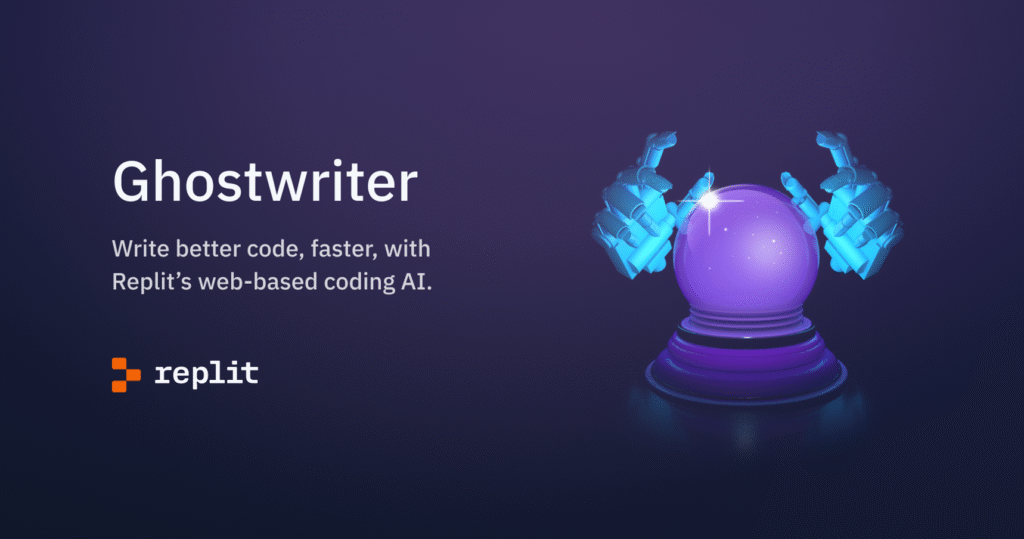
Replit Ghostwriter X is a top AI coding assistant. It changes how developers make and share apps. It’s a full development platform that works right in your browser.
This tool goes beyond just writing code. It helps you create, test, and share your work easily. No need for complicated setups.
Replit Ghostwriter X Overview
Replit Ghostwriter X is the next big thing in coding tools. It uses AI to help you write, test, and share code all in one place. It understands what you’re trying to do and turns your ideas into code in many languages.
Ghostwriter X is great for working together. Teams can code together with AI help. It’s perfect for schools, hackathons, and teams working from different places.
Pros
Ghostwriter X makes starting to code easy. You can work from any device with a browser. It’s great for developers who are always on the move.
It’s also great for working together. Many people can get AI help at the same time. This makes group projects go faster.
It’s fast at making prototypes. You can turn ideas into apps in minutes. It’s also good for learning because teachers can give feedback and AI suggestions together.
Deploying your work is easy too. You don’t have to worry about setting up complicated systems. This lets you focus on making your app better.
Cons
Ghostwriter X might not be as good for very big projects or tasks that need a lot of computer power. It needs the internet to work, which can be a problem if you don’t have good internet.
Some users say the AI suggestions aren’t as good as local tools like GitHub Copilot X. Also, some cool features cost money. This can be a problem for people who don’t have a lot of money or are students.
It’s a browser-based tool, so it can’t do everything. Some low-level system tasks are harder to do.
Features
Ghostwriter X can turn simple language into code. It knows about your whole project, not just what you’re working on. It can even find and fix errors before you run your code.
It has tools for managing your code and databases. It’s also good for working together. Teams can debug together with AI help, which saves a lot of time.
| Development Scenario | Key Ghostwriter X Benefits | Time Savings | Best For |
|---|---|---|---|
| Educational Projects | Real-time instructor feedback with AI guidance | 40-60% | Students, Teachers, Bootcamps |
| Rapid Prototyping | Instant deployment from concept to demo | 50-70% | Startups, Product Managers |
| Remote Team Development | Synchronized AI assistance for all team members | 30-45% | Distributed Teams, Agencies |
| Hackathons | Zero setup time with immediate collaboration | 60-80% | Competitive Coders, Innovators |
7. Anthropic Claude for Coding

Anthropic’s Claude for Coding offers a new way to use AI in coding. It focuses on understanding and explanation, not just speed. This makes it a thoughtful partner for developers, helping them write and understand code better.
Anthropic Claude for Coding Overview
Claude for Coding is a special tool from Anthropic for coding tasks. It uses Claude’s advanced language skills to connect natural language and code.
Claude is unique because it’s designed to be helpful, safe, and honest. It’s great at explaining tough concepts and writing secure code in many languages.
Pros
Claude is excellent at making complex code easy to understand. Developers like how it asks questions to clarify things instead of guessing.
It’s also great for learning. It doesn’t just solve problems but explains why, helping developers grow.
Teams that care about safety will like Claude’s strict rules against bad code. It also remembers what you’ve talked about, so you don’t have to explain things over and over.
Cons
- It’s harder to add Claude to your workflow than some other tools
- It sometimes gives too much detail, slowing down your work
- It focuses on understanding, which can slow down fast projects
- It might be too expensive for solo developers or small teams
Features
Claude can write code in natural language and understand the context. It’s great for teaching and sharing knowledge because it breaks down complex code into simple parts.
It also has an automated debugging feature that explains problems step by step. Plus, it can find similarities in code from different languages. Claude suggests smart ways to improve code, thinking about both speed and clarity.
For teams that want to understand their code as much as they want to write it, Claude is a top choice in 2025.
8. JetBrains AI Assistant Pro

In the world of AI coding tools, JetBrains AI Assistant Pro stands out. It’s made for the JetBrains ecosystem. It gives help that fits each IDE perfectly.
JetBrains AI Assistant Pro Overview
JetBrains AI Assistant Pro works well with IntelliJ IDEA, PyCharm, and more. It knows the special needs of each IDE. It gives tips based on the language and project.
Developers get help that feels like part of their IDE. This makes coding smoother and more natural.
Pros
JetBrains AI Assistant Pro is great because it fits perfectly with JetBrains tools. It knows the rules for each language. For example, it helps Java users with Java tips and Python users with Python tips.
It works fast and gets better over time. It’s easy for teams already using JetBrains to start using it too.
Cons
The big drawback is it only works for JetBrains users. It costs extra, which might be hard for some to afford.
It can slow down older computers, especially with big projects. It might not understand very specific code. Offline use is also limited.
Features
JetBrains AI Assistant Pro offers smart code completion and refactoring suggestions. It can even write unit tests for you. You can search for code using simple language.
It helps write documentation and works with debugging tools. It suggests fixes for errors and exceptions.
| IDE | Specialized AI Features | Best For | Language Support | Integration Depth |
|---|---|---|---|---|
| IntelliJ IDEA | Enterprise pattern recognition, Spring framework awareness | Java enterprise development | Java, Kotlin, Groovy | Comprehensive |
| PyCharm | Data science code suggestions, notebook integration | Python development, data analysis | Python, SQL | Advanced |
| WebStorm | Framework-aware completions, CSS optimization | Frontend development | JavaScript, TypeScript, HTML/CSS | Advanced |
| CLion | Memory management suggestions, performance optimizations | C/C++ development | C, C++, Rust | Advanced |
| Rider | .NET pattern recognition, Unity-specific assistance | C# and game development | C#, F#, VB.NET | Advanced |
9. Codeium Enterprise
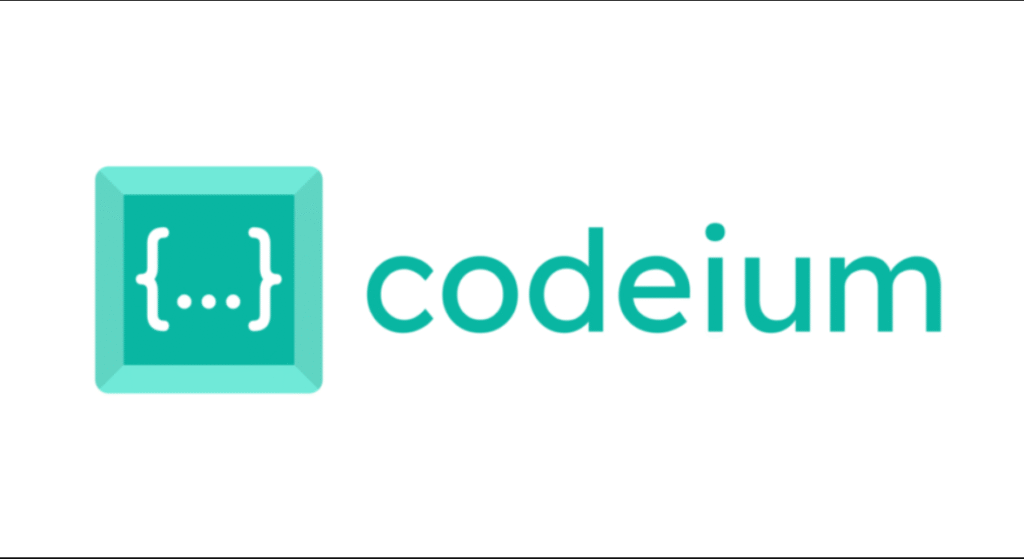
Codeium Enterprise changes how big companies use AI for coding. It combines strong generation tools with top security and rules. This helps companies work faster while following strict rules.
Codeium Enterprise Overview
Codeium Enterprise is a big step up from the free version. It’s made for big teams. It lets companies use AI to write code while keeping their secrets safe.
The Enterprise version has special features like private use and extra support. It works well with other tools in big companies. It also has tools for managers to keep an eye on things.
Pros
Codeium Enterprise is very secure. Companies can use it on their own servers or in private clouds. This keeps their code safe. The AI can learn from the company’s own code, making it better at understanding their needs.
Big teams can manage coding rules from one place. The system works well with lots of users. It also fits with how companies manage who can access what.
Cons
Setting up Codeium Enterprise takes a lot of work. Companies need strong servers for private use. They also need to spend time training the AI to get the most out of it.
The control panel is harder to learn than some other tools. Some users find it too complicated. The cost is also high, which might be a problem for some.
Features
Codeium Enterprise has AI models just for your company’s code. It has tools for following rules and keeping data safe. This is important for companies that have to follow strict rules.
The system checks how good the code is and how well developers work. It helps teams share ideas. The Enterprise version also has fast support and a personal manager.
| Enterprise Need | Codeium Enterprise Feature | Business Impact | Implementation Complexity |
|---|---|---|---|
| Data Security | Private deployment options with no code exfiltration | Protects intellectual property and sensitive code | Moderate to High |
| Compliance | Comprehensive audit trails and governance tools | Simplifies regulatory adherence in development | Moderate |
| Team Standardization | Custom coding standards enforcement | Improves code consistency across large teams | Low |
| Proprietary Knowledge | Private model training on internal codebases | Enhances AI understanding of company-specific code | High |
| Integration | Enterprise authentication and tool ecosystem support | Reduces friction in developer workflows | Low to Moderate |
10. Microsoft IntelliCode Advanced

Microsoft IntelliCode Advanced stands out in the AI coding world. It deeply connects with Visual Studio and Microsoft’s development tools. This tool is Microsoft’s most advanced AI coding assistant, built from years of developer feedback and machine learning.
This tool doesn’t just suggest code; it gets your projects at a deep level. For teams using Microsoft technologies, IntelliCode Advanced offers special features that other AI tools can’t match.
Microsoft IntelliCode Advanced Overview
IntelliCode Advanced changes coding in Visual Studio and Visual Studio Code. It offers code generation that knows your project’s context. Unlike its earlier version, this 2025 version understands your entire codebase, not just parts.
It shines with C#, .NET, and Azure development. IntelliCode Advanced learns from public and private codebases. It gives suggestions that fit your team’s coding style and standards.
It also works well with Microsoft’s documentation system. You get real-time guidance and best practices as you code. This makes coding and learning a seamless experience.
Pros
IntelliCode Advanced’s biggest plus is its deep connection with Microsoft’s tools. It knows .NET frameworks well and suggests code that fits Microsoft’s design patterns.
Its team intelligence features are unique. IntelliCode learns from your team’s coding patterns, getting better over time. It’s great at suggesting Azure code snippets, speeding up cloud development.
Its refactoring skills are top-notch, finding optimization chances that humans might miss. For big teams, it helps keep coding standards consistent across projects.
Cons
While great with Microsoft tools, IntelliCode Advanced has limits with non-Microsoft tech. It supports JavaScript and Python but not as well as C# and TypeScript.
Some advanced features need Visual Studio Enterprise subscriptions. This can be a problem for developers on lower plans. Older hardware might struggle with its performance, especially with big solutions.
Getting the most out of IntelliCode Advanced takes time. New users might feel overwhelmed by all the options and settings.
Features
IntelliCode Advanced offers code completions that understand your project’s context. It can even generate entire methods based on comments or function signatures, speeding up development.
It’s automated test generation for .NET apps is a standout feature. IntelliCode analyzes your code and creates detailed test suites, covering edge cases humans might miss.
The architecture analysis feature looks at your whole solution. It suggests improvements and finds potential bottlenecks before they become issues. This proactive approach to code quality makes IntelliCode Advanced unique.
| Feature | IntelliCode (Original) | IntelliCode Advanced | Performance Impact | Subscription Required |
|---|---|---|---|---|
| Basic Code Completion | Yes | Yes (Enhanced) | Minimal | No |
| Whole Function Generation | Limited | Comprehensive | Moderate | No |
| Team Learning Patterns | No | Yes | Moderate | Yes (Pro+) |
| Automated Test Generation | No | Yes | High | Yes (Enterprise) |
| Architecture Analysis | No | Yes | High | Yes (Enterprise) |
Conclusion
The world of software development is changing fast, thanks to AI code generation tools. These ten tools show what’s possible when AI and programming come together.
Each tool has its own strengths. GitHub Copilot X is great for teamwork, while Amazon CodeWhisperer focuses on safety. Replit Ghostwriter X makes quick prototypes, and JetBrains works well with popular IDEs.
When picking AI tools, think about what you need. Many developers use different tools for various tasks. For example, one for starting code and another for checking security.
AI programming does more than just speed up coding. It keeps coding standards high, cuts down on bugs, and lets developers tackle tough problems. They don’t have to spend time on simple code.
As AI tools get better, making software will get even faster. The best developers will use these tools wisely in their work.
The future of software development looks bright, with humans and AI working together. By using these technologies now, you’ll be ahead in the AI coding world. You’ll make better software, faster and with fewer mistakes.
FAQ
How have AI code generation tools changed software development by 2025?
AI code generation tools have changed software development a lot. Now, developers use smart systems to write, improve, and check code. This makes coding faster, reduces mistakes, and lets developers focus on solving big problems.By 2025, AI will be a big help in all stages of development.
What are the key technological advancements in AI code generation tools in 2025?
Big improvements include better natural language processing and understanding of codebases. Models are now trained for specific languages and frameworks. Developers can also use images and voice to write code.These changes have made coding faster and easier.
How should I evaluate which AI code generation tool is right for my team?
Look at the tool’s code quality, language support, and how it fits with your team. Check if it works well with your tools and if it’s easy to use. Also, consider the cost and how it fits your budget.The best tool depends on your team’s needs and how you work.
What makes GitHub Copilot X stand out among AI coding tools?
GitHub Copilot X uses GPT-4 technology and works great with the GitHub ecosystem. It understands projects well and can write complex code easily. It supports many languages and works outside the IDE too.Its chat interface and test generation make it even more useful.
How does OpenAI Codex Pro differ from GitHub Copilot?
OpenAI Codex Pro is a direct service from OpenAI, unlike GitHub Copilot. It’s great at understanding natural language and can translate code. It offers API access and has a playground for testing.It also has special modes and security features for businesses.
What are the strengths of Amazon CodeWhisperer Advanced for cloud development?
Amazon CodeWhisperer Advanced is great for cloud development. It generates secure, optimized code and works well with AWS services. It suggests best practices and checks for security issues.It’s especially good for teams using AWS a lot.
How does Google Duet AI integrate with Google Cloud Platform?
Google Duet AI works well with Google Cloud services. It’s good at generating code for Google-specific technologies like Kubernetes. It offers contextual code completion and natural language generation.It also helps with debugging and supports Google Cloud APIs.
What privacy features does Tabnine Enterprise offer for organizations?
Tabnine Enterprise focuses on privacy. It trains models on internal code without sending data outside. It supports team coding standards and integrates with security systems.It’s great for companies that need to protect their code.
How does Replit Ghostwriter X support collaborative development?
Replit Ghostwriter X is easy to use in the browser and supports teamwork. It helps with all development stages and can deploy code with one click. It works well with version control and databases.It’s perfect for teams that need to work together fast.
What makes Anthropic Claude for Coding different from other AI coding assistants?
Claude for Coding is unique because it’s safe and helpful. It understands complex code and gives clear explanations. It’s careful not to suggest bad code.It’s great for teams that value safety and clear explanations.
How does JetBrains AI Assistant Pro enhance the JetBrains IDE experience?
JetBrains AI Assistant Pro is deeply integrated with JetBrains’ IDEs. It suggests code that fits your project and coding style. It helps with refactoring, testing, and documentation.It works well with JetBrains’ debugging and version control tools.
What enterprise features does Codeium Enterprise provide?
Codeium Enterprise offers features for big companies. It can be deployed on-premises and trains models privately. It supports custom coding standards and integrates with other tools.It also analyzes code quality and productivity, and has special features for regulated industries.
How well does Microsoft IntelliCode Advanced work with .NET and Azure development?
Microsoft IntelliCode Advanced is great for .NET and Azure. It understands .NET frameworks and patterns well. It suggests code and helps with Azure development.It learns from your team’s code patterns, making it very useful.
Can AI code generation tools completely replace human developers?
No, AI tools are best when they work with humans. They make coding faster but can’t replace human creativity. Humans are needed for solving new problems and making decisions.The best approach is to let AI handle routine tasks and let humans focus on the important stuff.
Are there any security concerns with using AI code generation tools?
Yes, there are security worries. Some tools might suggest vulnerable code or outdated methods. There’s also the risk of sending sensitive code to external servers.Tools like Tabnine Enterprise, Codeium Enterprise, and Amazon CodeWhisperer Advanced address these concerns with features like on-premises deployment and security scanning.
How do pricing models differ among AI code generation tools?
Pricing models vary a lot. Some tools charge a subscription fee (GitHub Copilot X, JetBrains AI Assistant Pro). Others charge based on usage (OpenAI Codex Pro). Many offer free versions with limited features.Enterprise solutions often have special pricing for large organizations and extra features.
How can teams effectively integrate AI code generation into their development workflow?
Start by choosing tools that fit your environment and languages. Set rules for when to use AI and how to review its code. Consider using different tools for different tasks.Train your team to use AI well and understand its strengths and weaknesses.
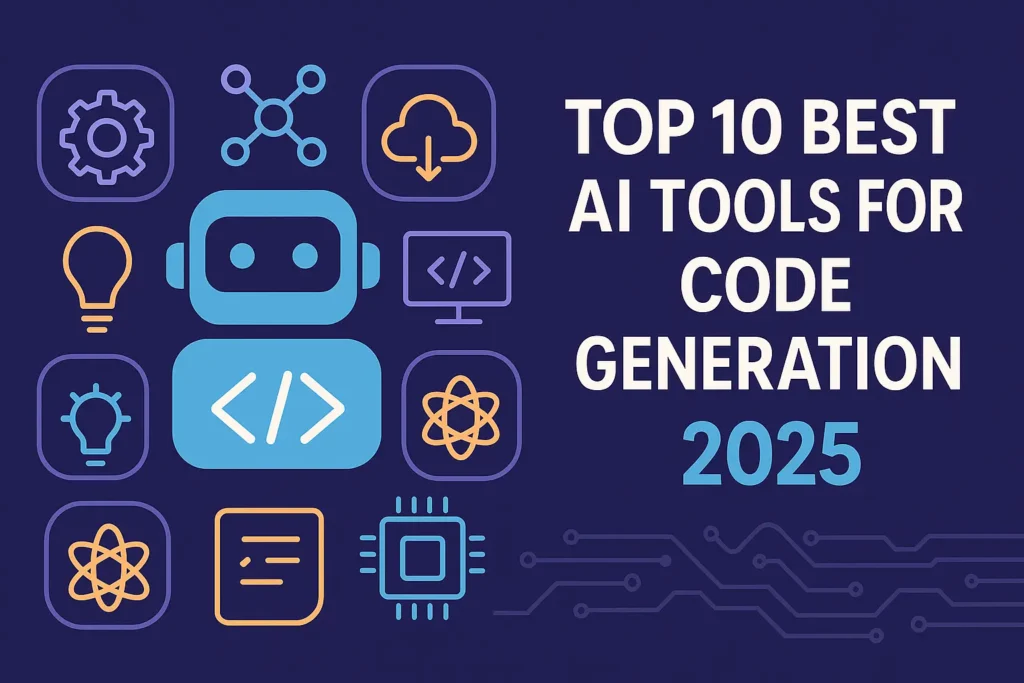
1 Comment
Pingback: MCP Servers: The Next Big Thing in AI